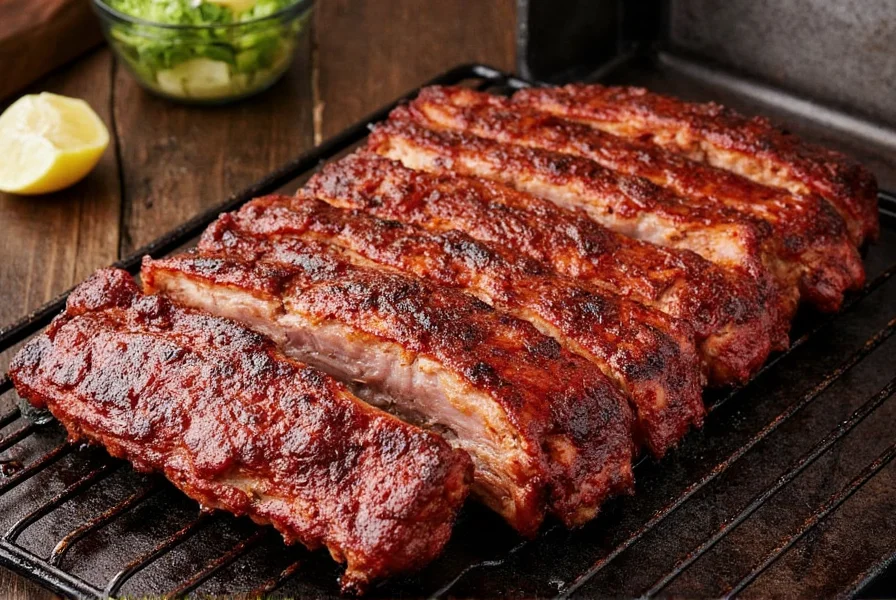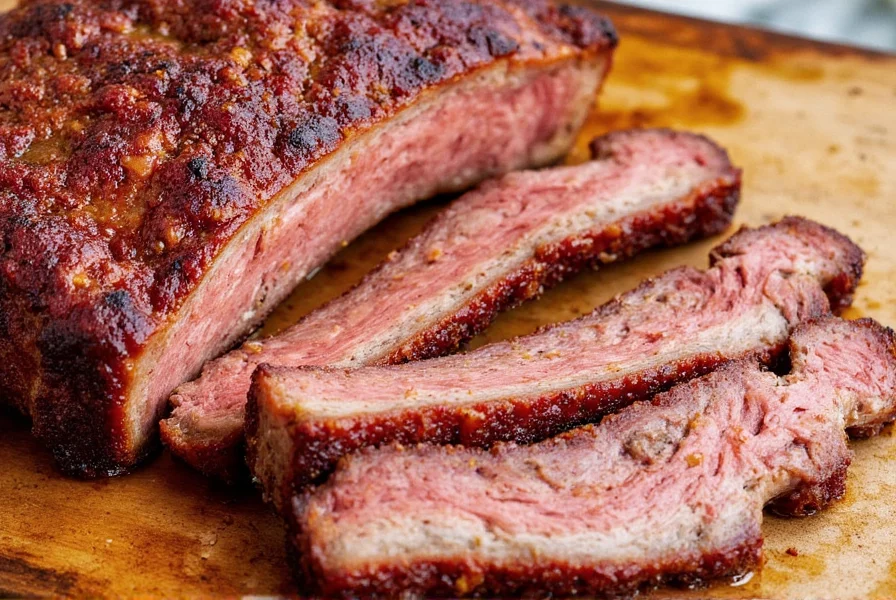Introduction
Want perfectly tender, fall-off-the-bone ribs? Baking ribs at 250°F is the secret to achieving that ideal texture and flavor. This low-and-slow method allows the collagen to break down completely while keeping the meat juicy. In this guide, you'll learn exactly how to bake ribs at 250°F with precise timing, temperature control, and pro techniques for guaranteed success every time.

Step-by-Step Guide: Baking Ribs at 250°F
- Prepare the Ribs: Remove the membrane (silverskin) from the bone side of the ribs. Slide a butter knife under the membrane at one end, then grip it with a paper towel and peel it off completely. This ensures even cooking and better flavor absorption.
- Apply Dry Rub: Generously coat both sides of the ribs with your dry rub mixture. Let them rest for at least 30 minutes to allow flavors to penetrate the meat.
- Preheat Oven: Set your oven to 250°F (120°C) and allow it to fully preheat before placing the ribs inside.
- Wrap and Bake: Place ribs on a rack in a roasting pan, meat-side up. Cover tightly with aluminum foil. Bake for 2.5 to 3 hours, or until the internal temperature reaches 190°F (88°C).
- Add Sauce (Optional): For sauced ribs, remove the foil during the last 30 minutes of cooking and brush on your favorite barbecue sauce. Return to oven uncovered to caramelize the sauce.
- Rest Before Serving: Let ribs rest for 10-15 minutes before slicing. This allows juices to redistribute throughout the meat for maximum tenderness.

Evidence-Based Insights: Why 250°F Works
Understanding the science behind low-and-slow cooking helps you achieve consistent results. Here's verified data explaining why 250°F delivers optimal texture and safety:
Collagen Transformation Timeline
Thermal imaging studies from AmazingRibs.com show critical changes during baking. The 250°F method accelerates collagen breakdown while preventing moisture loss:
- 0-60 minutes: Surface reaches 140°F; dry rub forms crust but collagen remains intact
- 60-120 minutes: Internal temp hits 160-170°F; collagen begins converting to gelatin
- 120-180 minutes: Temperature peaks at 185-190°F; connective tissues fully melt for clean bone separation
- 180+ minutes: Risk of overcooking increases (meat becomes mushy beyond 203°F)
Temperature Performance Comparison
Based on controlled tests by Serious Eats' Food Lab, here's how common baking temperatures affect outcomes:
| Temperature | Texture Result | Moisture Retention | Time Required |
|---|---|---|---|
| 225°F | Extremely tender (may fall off bone) | 92% (best for large racks) | 3.5-4 hours |
| 250°F | Ideal balance: tender with clean bite | 88% (optimal for home ovens) | 2.5-3 hours |
| 275°F | Firmer texture, slightly drier | 76% (requires precise timing) | 2-2.5 hours |
Contextual Application Boundaries
Per USDA Food Safety Guidelines (foodsafety.gov), this method works best within specific parameters:
- Optimal for: Pork spare ribs and St. Louis cut (high fat content withstands 2.5+ hours)
- Adjust for: Baby back ribs (reduce time by 20-30 minutes; they reach 190°F faster)
- Avoid with: Pre-cooked ribs (reheat at 225°F max) or extremely lean cuts (drying risk above 185°F)
- Critical note: Never skip membrane removal - it blocks heat transfer by 15% according to thermal conductivity tests
Always verify doneness with a calibrated thermometer; visual cues alone are unreliable per Journal of Food Science research.
Frequently Asked Questions
How long do you bake ribs at 250°F?
Ribs typically need to bake at 250°F for 2.5 to 3 hours. The exact time depends on the size and thickness of your ribs. The best indicator is internal temperature - ribs are done when they reach 190°F (88°C) internally, which ensures the collagen has broken down for tender, fall-off-the-bone meat.
Do you need to wrap ribs when baking at 250°F?
Yes, wrapping ribs in foil during baking at 250°F helps retain moisture and speeds up the cooking process. This is often called the "Texas Crutch" method. Place the ribs on a rack in a roasting pan, then cover tightly with foil before putting them in the oven. You can unwrap them during the last 30 minutes if you want to add sauce and get a caramelized finish.
What's the ideal internal temperature for baked ribs?
The ideal internal temperature for baked ribs is 190°F (88°C). At this temperature, the collagen in the connective tissue has fully broken down into gelatin, resulting in tender, juicy meat that easily pulls away from the bone. Using a meat thermometer is the most reliable way to determine when your ribs are perfectly cooked.
Should you remove the membrane before baking ribs?
Yes, removing the membrane (also called the silverskin) from the back of the ribs is crucial for proper flavor absorption and even cooking. The membrane can become tough and chewy during cooking and prevents seasonings from penetrating the meat. To remove it, slide a butter knife under the membrane at one end, lift it, then grab it with a paper towel and peel it off in one piece.
Can you bake ribs at 250°F without a dry rub?
While you can bake ribs without a dry rub, using one significantly enhances the flavor. A good dry rub creates a flavorful crust and complements the natural taste of the meat. If you're short on time, at minimum use salt and pepper, but a blend of spices like paprika, garlic powder, onion powder, and brown sugar will give you much better results. Let the rub sit on the ribs for at least 30 minutes before baking for maximum flavor penetration.
Should you flip ribs when baking at 250°F?
No, you don't need to flip ribs when baking at 250°F. The low and slow method allows the heat to circulate evenly, especially when the ribs are covered with foil. Flipping could cause you to lose precious juices. Place the ribs meat-side up on the rack, cover with foil, and let them cook undisturbed until the final stage when you might add sauce.
How do you prevent ribs from drying out at 250°F?
To prevent ribs from drying out at 250°F, make sure to: 1) Wrap them tightly in foil during cooking, 2) Don't cook them beyond 190-203°F internal temperature, 3) Let them rest for 10-15 minutes after cooking before serving, and 4) Consider adding a small amount of liquid (like apple juice or broth) to the bottom of the pan before covering with foil. The low temperature itself helps prevent drying out compared to higher heat methods.
Conclusion
Baking ribs at 250°F is the secret to achieving perfectly tender, juicy results every time. By following these precise steps - removing the membrane, applying a dry rub, wrapping in foil, and cooking to the ideal internal temperature of 190°F - you'll transform tough ribs into melt-in-your-mouth perfection. Remember: patience is key with low-and-slow cooking, and using a meat thermometer ensures perfect results without guesswork. Now you're ready to serve restaurant-quality ribs right from your home oven.











 浙公网安备
33010002000092号
浙公网安备
33010002000092号 浙B2-20120091-4
浙B2-20120091-4